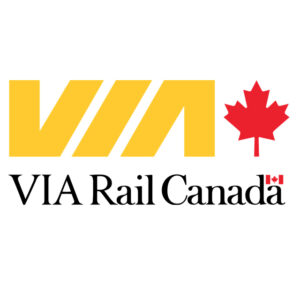 MONTREAL — VIA Rail Canada wants about 90% of its proposed High Frequency Rail route between Toronto and Quebec City to be electrified, the passenger operator’s CEO has told the Montreal Gazette.
MONTREAL — VIA Rail Canada wants about 90% of its proposed High Frequency Rail route between Toronto and Quebec City to be electrified, the passenger operator’s CEO has told the Montreal Gazette.
VIA CEO Cynthia Garneau said the 90% figure “is not a written goal” but that the company will aim to electrify as much of the route is possible. That portions of the route near city centers, using routes owned by other companies, might not be electrified.
VIA unveiled the High Frequency Rail project, which would provide separate, passenger-only rights-of-way on parts of the corridor, in 2015. It remains largely conceptual, however, as the Canadian government has funded various studies but has yet to make a financial commitment to a project that could cost C$12 billion or more. In its latest move, the government said it would seek private-sector involvement in the project, a process that will continue through fall 2024 [see “Transport Canada inches forward …,” Trains News Wire, March 10, 2022].














The well-meaning but slow VIA Rail Canada has still a lot more to learn from its highly developed french counterpart SNCF, especially about the electrification projects.
Dr. Güntürk Üstün
Dual mode passenger equipment is used in the UK. The new 800 series trainsets derived from a Japanese design run in electric mode under catenary and on diesel using non-electrified lines. The trainsets are not as powerful or fast on diesel but I believe they can still reach 100 miles per hour. UK freight operators use Type 88 locomotives which are designed primarily to operate using catenary but have the ability to run on diesel for “last mile” travel into yards and industrial customers. Dual mode locomotives are not uncommon in Europe where large parts of the rail network are electrified. North America doesn’t have them because no freight railways are electrified.
And once again southwestern Ontario is left out. It’s not bad enough that the Toronto-Kitchener-London fork of the corridor is like going down a dirt road.
VIA clearly intends to electrify the track it owns or will acquire/build, which is 90% of the High Frequency Route between Toronto, Ottawa, Montreal, and Quebec — using dual-modes to cover the gabs on CN tracks.
Benjamin, I have to agree with some sort “dual mode” to fill the gaps. It is indeed interesting that this Via news release is on the same day as GO, the same problem is going to exist especially on the Lakeshore West terminating electrification in Burlington after they spent $100’s of millions over many years adding the third track into Hamilton to get all day service with an eye to increased service to Niagara.
With Aldershot and Hamilton’s two stations and the future Stoney Creek station as well as the terminus yards off the electrification line, somethings got to to be done to make a fluid system.
I can only assume CN Is not allowing the electrification or the increase in train frequency past Burlington Go.
It seems odd to have this as a stated goal: 90% electrification between two major points? So, would that imply a new endpoint for electrified service, presumably less attractive to travelers? A locomotive change to complete endpoint-to-endpoint trips (which seems counterintuitive)?
How does this accomplish a larger goal of more efficient or less energy-intensive travel?